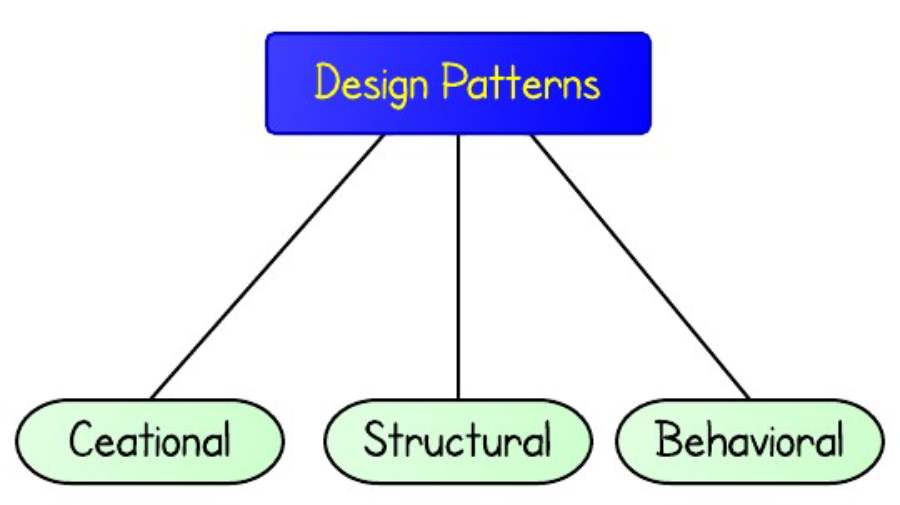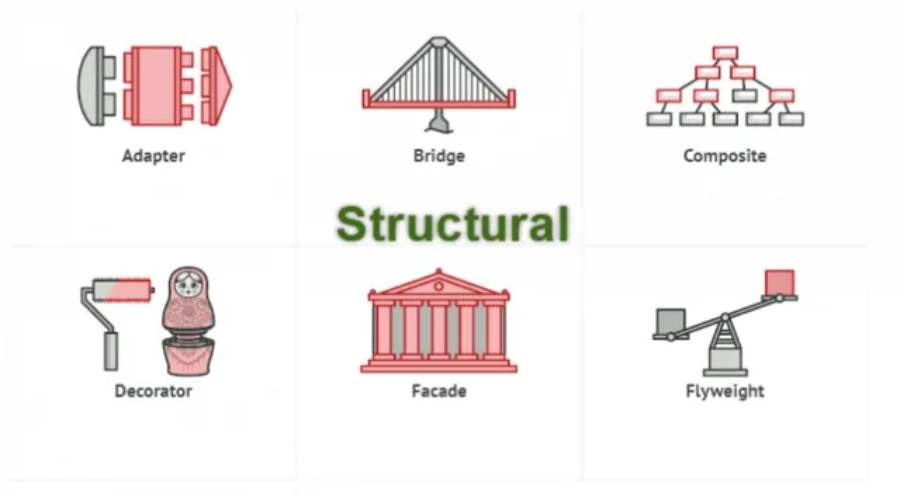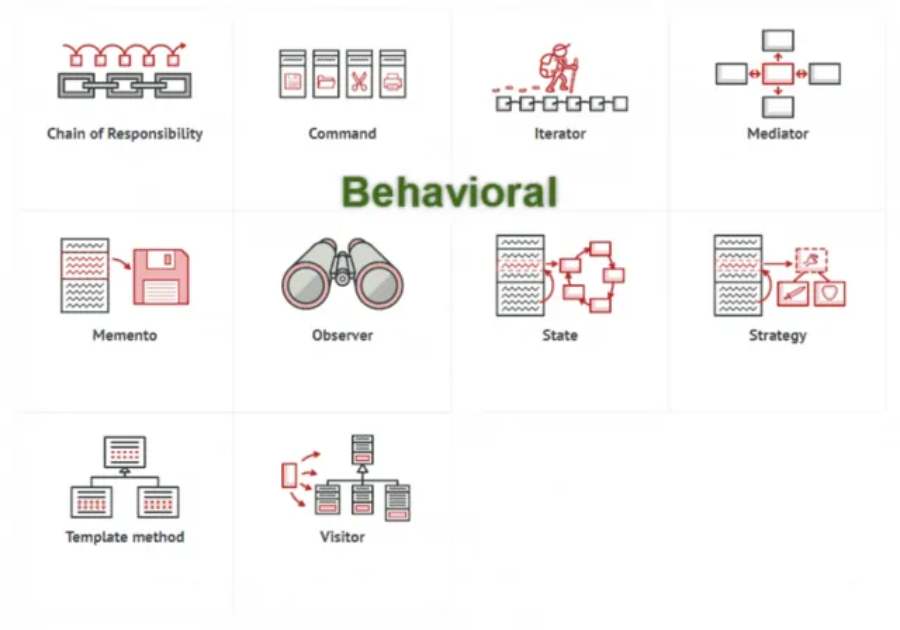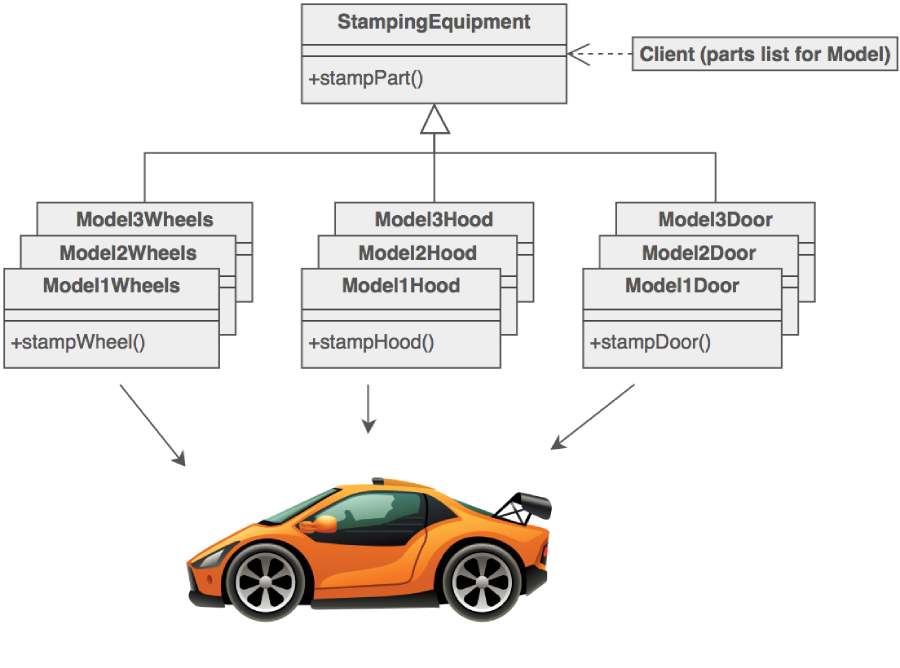Best Selling Products
Understanding What Design Patterns Are? Why Is It Necessary to Learn Design Patterns?
Nội dung
- 1. Learn what Pattern is?
- 2. Reasons why you should learn Design Patterns
- 2.1. Helps build software that is easy to maintain and extend
- 2.2. Create readable and understandable source code
- 2.3. Increase software development efficiency
- 2.4. Minimize errors and improve software quality
- 2.5. Support in communication and cooperation between programmers
- 3. Popular Design Patterns
- 3.1. Creational Patterns
- 3.2. Structural Patterns
- 3.3. Behavioral Patterns
- 4. How to learn Design Patterns effectively
- 4.1. Understand the basic concepts
- 4.2. Learn by Design Pattern group
- 4.3. Practice through specific examples
- 4.4. Read the documentation and join the community
- 4.5. Application to real projects
- Conclusion
Learn about Design Patterns, their basic concepts, and their importance in software design. The reasons why learning Design Patterns is essential for every programmer.

Design Pattern is one of the basic and important concepts in the field of programming and software design. Especially for programmers who want to build software systems that are easy to maintain, easy to expand and effective. The following article Sadesign will help you learn what Design Pattern is, why it is important and why you should learn it today.
1. Learn what Pattern is?
The term Pattern (or “pattern”) is used to refer to reusable solutions to common problems that programmers encounter when designing software systems. These solutions have proven to be effective in many different situations and can be reapplied to help programmers solve problems more quickly and accurately.
Patterns are not specific pieces of code or detailed problem solving, but a model, a guide that helps programmers make the right decisions about how to organize source code and software structure.

In which, Design Pattern is a type of Pattern specifically applied in software design. Design Pattern helps programmers solve common problems encountered in the software development process, while providing a clear approach to building software that is easy to maintain and easy to extend. Design Pattern is not a specific code but a design model that has been proven over time, bringing high efficiency in building software systems.
@old
2. Reasons why you should learn Design Patterns
Learning and understanding Design Patterns brings many significant benefits, not only to programmers but also to the entire software development team. Here are the reasons why learning Design Patterns is extremely important.
2.1. Helps build software that is easy to maintain and extend
One of the main reasons why Design Patterns are so popular among the programming community is their ability to help build software that is easy to maintain and easy to extend. By applying design patterns to your software development process, you can easily separate parts of the system and minimize the dependencies between them.
For example, one popular design pattern, the Singleton Pattern, helps you ensure that only one instance of a class is created during the entire application lifecycle. This is useful when you want a single object to be responsible for managing resources such as database connections or user sessions. This not only improves performance but also reduces errors during development.
2.2. Create readable and understandable source code
Design Patterns help make source code easier to understand. Because these design patterns have been standardized and widely used, programmers can easily recognize and understand how the system works when looking at the code without having to spend too much time learning.
For example, the Observer Pattern is often used to solve the problem of synchronizing objects when their state changes. When you use this pattern, anyone reading your code will immediately know that the system is monitoring events and updating the state of the related objects when there are changes.

2.3. Increase software development efficiency
Learning and using Design Patterns reduces design time. Once you are familiar with design patterns, you don’t have to start from scratch when solving similar problems. Instead, you can re-apply proven solutions, saving time and effort.
Furthermore, using Design Patterns helps reduce code duplication. Programmers can reuse design patterns in different projects, helping to maintain consistent code and reduce complexity in the system.
2.4. Minimize errors and improve software quality
Design Patterns are built from practical experience and have been tested over many years. Using these design patterns helps programmers avoid common mistakes in system design, thereby improving software quality.
Patterns like Factory Method make it easy to manage the creation of complex objects without having to change the source code of other classes, helping to reduce errors when changing the system structure. This can significantly reduce the number of errors that arise during software development.
Design Patterns provide many important benefits in the software development process. They help optimize system design by providing proven solutions, minimizing risks, and saving programmers time. Applying Design Patterns also makes the source code easier to maintain and extend, as these design patterns often focus on flexibility and reusability. In addition, Design Patterns also promote consistency in problem solving among team members, making it easier for them to communicate and collaborate more effectively.

2.5. Support in communication and cooperation between programmers
When working in a team, especially on large projects, using Design Patterns helps create a common language among programmers. Whenever you encounter a problem, instead of having to explain a new solution, you can use existing Patterns to communicate with your colleagues, thereby enhancing collaboration and minimizing misunderstandings.
3. Popular Design Patterns
Design Patterns can be divided into three main groups: Creational Patterns, Structural Patterns, and Behavioral Patterns. Each of these groups solves a different type of problem in the software design process, and they can be applied depending on the needs and characteristics of the project.
3.1. Creational Patterns

Creational Patterns are design patterns that help create objects in a flexible and efficient way. These patterns are especially useful in controlling the object creation process, thereby minimizing dependencies and optimizing performance. Design patterns in this group help programmers create objects without having to know exactly what type of object will be created at compile time. This provides great flexibility, reduces rigidity in the source code, and makes the code easier to change.
Some popular design patterns in the Creational Patterns group include:
- Singleton Pattern: Ensures that only a single object exists throughout the life cycle of the application.
- Factory Method Pattern: Provides a way to create an object without specifying the exact class to be instantiated.
- Abstract Factory Pattern: Allows creating groups of objects without having to know exactly which classes are in that group.
- Builder Pattern: Separates the process of building a complex object from the object itself.
3.2. Structural Patterns
Structural Patterns focus on defining how classes and objects can be organized and linked together efficiently. The main goal of Structural Patterns is to reduce complexity in system design by organizing objects and classes so that they can cooperate easily and clearly.
Design patterns in this group often help solve problems related to creating relationships between objects, classes, or even between systems. Some common design patterns in the Structural Patterns group include:
- Adapter Pattern: Allows two incompatible classes to work together.
- Composite Pattern: Allows objects to be organized into a tree structure, where child objects can be treated like parent objects.
- Decorator Pattern: Allows extending the functionality of an object without changing the original class.
- Facade Pattern: Provides a simple interface to interact with a more complex system.
- Proxy Pattern: Provides a proxy object to replace the original object.
3.3. Behavioral Patterns

Behavioral Patterns are design patterns that address issues related to how objects and classes interact and communicate with each other. The goal of Behavioral Patterns is to make software work smoothly and easily maintainable, while allowing objects in a system to interact with each other in a clear and consistent way.
Some design patterns in the Behavioral Patterns group include:
- Observer Pattern: Allows an object (subject) to notify other objects (observers) of its changes without having to know who the recipients are.
- Strategy Pattern: Allows changing the behavior of an object without having to change its source code.
- Command Pattern: Allows turning requests into objects, making it easy to perform or undo actions.
- Iterator Pattern: Allows accessing elements of a set without knowing its internal structure.
- State Pattern: Allows an object to change its behavior when its internal state changes.
4. How to learn Design Patterns effectively
Learning Design Patterns can be challenging, especially for beginners. However, if you apply the right learning method, you will quickly understand and apply patterns in your programming work. Here are some useful steps to help you learn Design Patterns effectively.
4.1. Understand the basic concepts
Before you start learning design patterns, you need to have a solid foundation in object-oriented programming (OOP). This includes understanding concepts like classes, objects, inheritance, polymorphism, encapsulation, and abstraction. Once you have a solid grasp of OOP, it will be easier for you to approach and understand design patterns, as they are built on these principles.

4.2. Learn by Design Pattern group
Start learning Design Patterns from the simplest group, such as Creational Patterns. Then, you can continue with other groups such as Structural Patterns and Behavioral Patterns. Learning one group at a time will help you not to be overwhelmed and will make it easier to apply in practice.
4.3. Practice through specific examples
One of the best ways to learn Design Patterns is to practice with examples. You can look for real-world programming exercises related to each design pattern and try to apply them to specific situations. Practicing will help you understand how each design pattern solves a problem and improve your programming skills.
4.4. Read the documentation and join the community
Resources such as books, articles, and blogs about Design Patterns will help you better understand the theory and application of each design pattern. Joining the developer community, exchanging experiences and answering questions is also a good way to learn quickly and effectively.
4.5. Application to real projects
Ultimately, the best way to master Design Patterns is to apply them to real projects. When working on software projects, try to identify problems that you can solve with design patterns, and experiment with using them. This will not only help you understand how patterns work, but will also help you improve the quality of your software.
@old
Learning and using Design Patterns properly will help you write maintainable code, improve reusability, and increase software flexibility. By understanding the groups of patterns and learning from real-world examples, you will quickly apply Design Patterns to your work and improve your programming skills.
Conclusion
Above are some basic features of Design Patterns. Why do you need to learn Design Patterns? How to learn this application effectively, for your reference. Whether you are a beginner programmer or an experienced professional, understanding basic design patterns and how to apply them in your daily work is extremely important. If you haven't started yet, don't hesitate to learn about Design Patterns at Sadesign today to improve your programming skills!













































